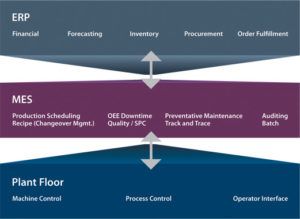Digital Visibility for Steel Black Box

Steel manufacturing is a black box , digitization is helping it become transparent!!
Steel industry is the most complex industry in terms of Operations control and Process optimization. Steel Manufacturing process involves series of batch and continuous processes and thus makes it harder to control the supply chain. Each of individual manufacturing processes have been traditionally named as black box, where there is no visibility on the activity in one process to other processes.
The inputs for steel making process involve raw materials which include Iron Ore, Coke and may other metallurgical compunds , commonly called flux. A change in the composition of any of the raw materials effects the production duration, production quantity and quality. Since Standard Operating Procedure for each process is designed for a defined input quality and quantity, a change in raw materials impacts all next processes. Any variation in quality and quantity involves a new Standard Operating Procedure, which the process operator feeds in system before the inputs reach his/her production unit. Before digital innovation, each operator had defined Standard Operating Procedure which he/she used irrespective of input quality,resulting in excess production loss and lower quality.
Integration of all processes in modern manufacturing is provided by digital innovation. A defined control structure for steel industry is developed which consists of 4 layers of controls. Manufacturing Execution System (MES) is one of the manufacturing systems that are used to bridge the gap of the bottom layer (such as the shop floor control) and the enterprise system layer (such as Enterprise Resource Planning: ERP). Typically, the main function of MES is to provide an information system which is used to optimize the production activities. Some Practical MES frequently include the problem models which make the MES a very complex system. Tata Steel partnered with Technology suppliers and has design a complete integrated Manufacturing Execution System(MES).
A typical manufacturing execution system has the following modules
-Material tracking
-Sales order management
-Production scheduling
-Quality management
-Inventory control
-Maintenance management
The inputs from all the process automation devices are fed to the manufacturing execution system and the user can see all the stages in the process. The use of manufacturing execution system has solved the following issues for Tata Steel:
- Visibility of the entire supply chain with the raw material to finished goods visible to the production planner. Earlier the production planner used to plan the production based on the last manufacturing station in the manufacturing supply chain.
- Real time production planning instead of daily plan based on actual production upstream and demand downstream, saving millions in excess and unplanned finish goods.
- Reduction in energy usage across the manufacturing unit. As all the production facilities are now linked, if one production facility undergoes unplanned break down, the production planner can shutdown other facilities, saving energy in running units which are not in production.
- Quality control in all the steps. As the production data is now available in real time basis, each station can take steps to control quality of steel by changing the standard operating procedure, if the previous station failed to meet the desired quality.
The next step involved developing a digital system for energy management for the steel plant. In any steel plant, energy is created by power plant which uses coal and gases which are produced during steel making process and also from grid. Energy management system involves capturing real time energy generated and energy required by all units of the steel plant. Since the energy requirement is captured on a real time basis, there is energy saving amounting to one third of actual energy demand of the production. The Energy Management System is a modularly structured solution that can be expanded flexibly. It contributes toward making efficiency levels and losses transparent throughout the entire production plant. It not only detects avoidable energy losses, but can also generate consumption forecasts and minimize peak loads. The system also supports the use of low-priced energy tariffs, reduces energy costs.
The advancement of digital technology has led to integration of Manufacturing execution system and energy management system. The combined system not only tracks and controls real time steel production, but helps minimize the cost of production by optimizing product mix , energy saving and lower inventory. Word Count 694
References:
1-http://www.bronermetals.com/mes_overview.php
2-http://www.wipro.com/documents/streamlining_business_processes.pdf
3-http://www.rockwellautomation.com/rockwellsoftware/mes.page
4-http://ietd.iipnetwork.org/sites/ietp/files/WSA_EnMS.pdf
5-https://www.oecd.org/sti/ind/DSTI-SU-SC(2014)14-FINAL-ENG.pdf
6-http://www.siemens.com/press/en/pressrelease/?press=/en/pressrelease/2011/industry_solutions/IIS201105917.htm




Pooja, this was a very interesting sneak peek into an industry I do not know anything about. I agree with how Manufacturing Execution System (MES) improves the communication between the shop floor control and the enterprise system layer. If possible, I would recommend you to quantify the impact of that in-house digital innovation of Tata Steel. What there the supply chain efficiencies that were captured? What was the USD cost savings?